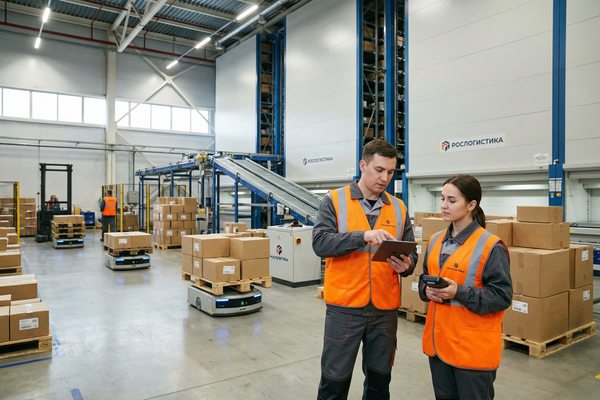The order and stages of training of working personnel is a systematized sequence of events aimed at acquiring, developing, improving the knowledge and skills of employees regardless of their profession. This will increase the level of performance of job responsibilities, affect adaptation to the organizational culture and working conditions for outsorsing in industry. Such a process includes analysis of needs, continuous training of the team, and quality assessment.
The order and stages of training of working personnel
The relevance of high-quality personnel training
- Increased productivity. Employees who have completed the training stage are able to cope with the tasks assigned to them without errors.
- Reduced staff turnover. Employees stay with the company if they see prospects for their own growth, reducing risks, with hiring costs.
- Technological changes. Constant changes in technology require the development of digital competencies. This helps to adjust the team to work with advanced tools in order to stay abreast of the latest trends.
- Advantage in market competition. Companies need personnel who are able to quickly adapt to new market requirements, which directly affects business results.
- Formation of corporate culture. Regular training and development programs help to establish uniform standards within the company, strengthening team spirit.
- Improving the company's image. Organizations that improve the competence of their personnel create a positive image.
Main objectives
Enhance Competencies:
• Provide training in the skills needed to perform work tasks and adapt to market changes.
• Implement a certification system to increase trust.
Adaptation:
• Create an induction program for new employees to help them quickly get used to the team and understand the corporate culture.
• Conduct regular surveys to track the level of satisfaction of new employees.
Reduce Errors:
• Conduct regular training on quality and safety standards to reduce the number of deficiencies in the performance of tasks.
• Error analysis will help identify and resolve problem areas.
Principles of training workers
Training of blue-collar workers is a complex process aimed at creating qualified professional personnel who meet production requirements and the specifics of the company.
Stages of training of working personnel for admission
The stages of training will help ensure that the workforce is highly qualified and confident in their ability to perform their duties.
Preparatory stage
Needs analysis
Assess the current level of qualification of the staff, define goals and objectives.
Defining the audience
Identify categories of employees who need training based on their level of experience.
Developing the program
Create a training program that includes theoretical materials along with practical tasks, and determine the format. Then establish the certification criteria.
Main stage
Theoretical classes
• Present the necessary information with the standards that must be met.
• Discuss occupational health and safety issues.
Practical classes
• Conduct practical exercises to consolidate the information.
• Practice skills in real or simulated conditions.
Use of technology
• Implement modern educational technologies, such as online courses or interactive simulators.
• Use multimedia, presentations and other means to increase student engagement.
Final stage
Testing
• Conduct control tests to assess the level of assimilation of the material.
• Check practical skills through demonstration of skills.
Certification
• Assess knowledge and skills according to established criteria.
• Assign certificates for improving the level of qualification.
Feedback
• Collect feedback from participants to analyze the effectiveness of the course.
• Analyze successes and shortcomings.
Methods of training employees
Employee training methods are ways of interaction between a mentor and an employee, which are aimed at improving work skills.
Traditional methods
Lectures
Oral presentations or lessons aimed at transmitting information. They are suitable for theoretical training.
Mentoring
A method of individual training, when a mentor helps a newcomer in mastering. This helps to build a trusting relationship, thereby transferring experience through live communication.
Internships
On-the-job training, which allows employees to gain real experience under the guidance of colleagues.
Innovative approaches
Online training
Consists in greater availability of materials at any time. Includes interactive elements such as videos, tests, discussion forums.
Gamification
Using game elements, points, achievement levels to increase employee engagement. This will motivate employees, making the process more interesting.
Evaluation of training effectiveness
Evaluation of training effectiveness is becoming a central aspect of resource management and educational processes in an organization. Analysis methods allow identifying the strengths and weaknesses of activities in order to optimize them in the future.
Evaluation criteria
Performance
Measuring changes in employee productivity "before and after" the course. They are based on specific indicators, i.e. the speed of task completion and the amount of work done.
Satisfaction
Assessment of the level of satisfaction of participants determines both the general feeling and more specific aspects, such as the quality of the materials and the applicability of the acquired knowledge in practice.
Achieving goals
Analysis of the achievements that were set for the training program, as well as comparing the results obtained with the planned ones and determining which goals were achieved and which were not.
Analysis methods
KPI
Monitoring the established KPIs will help to identify trends and criteria for improvement. This includes the percentage of successful course completions, the level of assistance requested, the volume of implemented improvements.
Surveys
Conduct anonymous surveys among participants to gather information about their expectations and satisfaction levels. Use different types of questions to gain a deeper understanding of perceptions.
Interviews
Conduct in-depth interviews, using data to identify problem areas or, conversely, successes of practices.
Conclusion
In general, the training of working personnel in Moscow is characterized by high dynamics. Its proper organization contributes to an increase in labor productivity, as well as to the improvement of relations in the team. Regular professional development in the specialty helps to remain competitive. Also, the creation of a favorable atmosphere for training motivates employees to develop.






